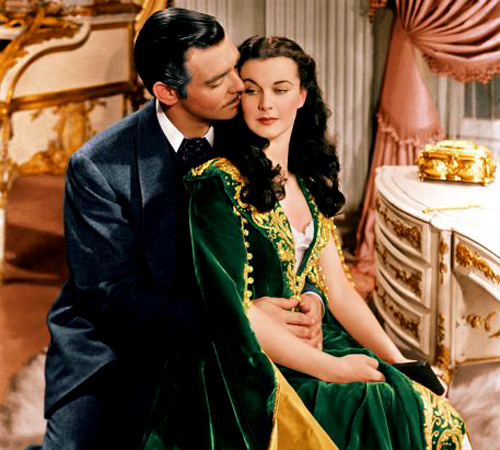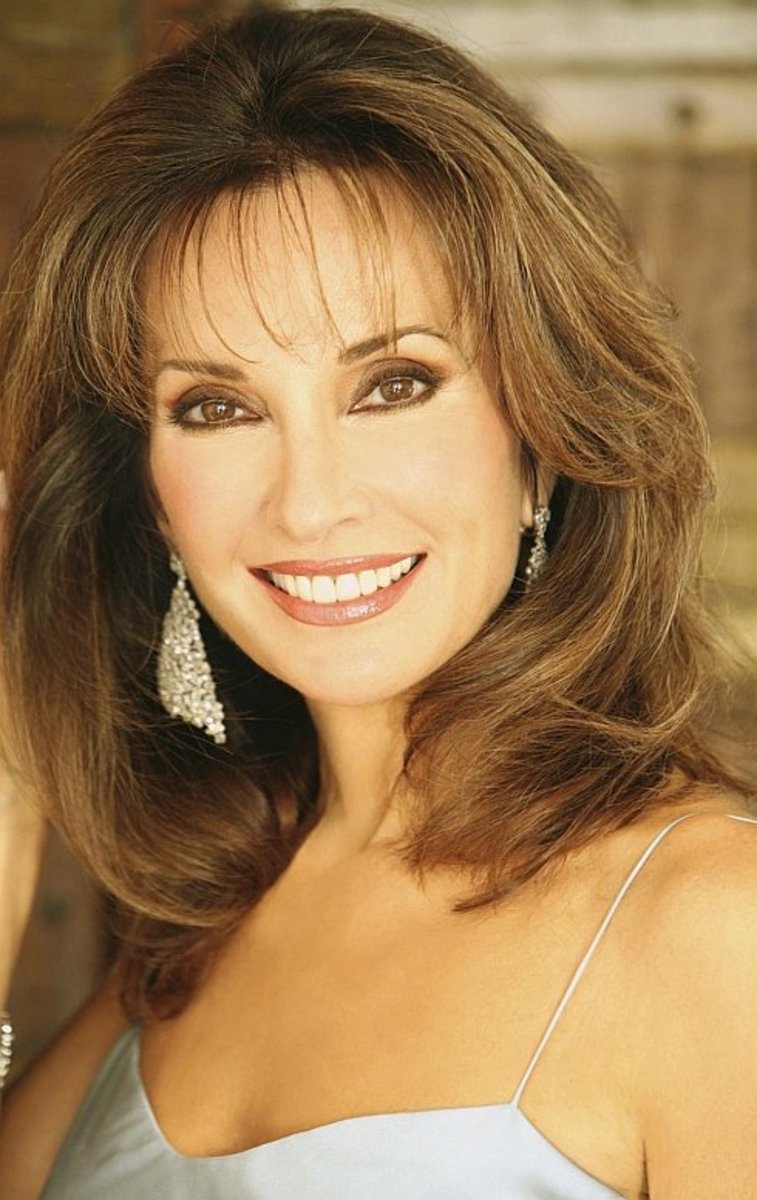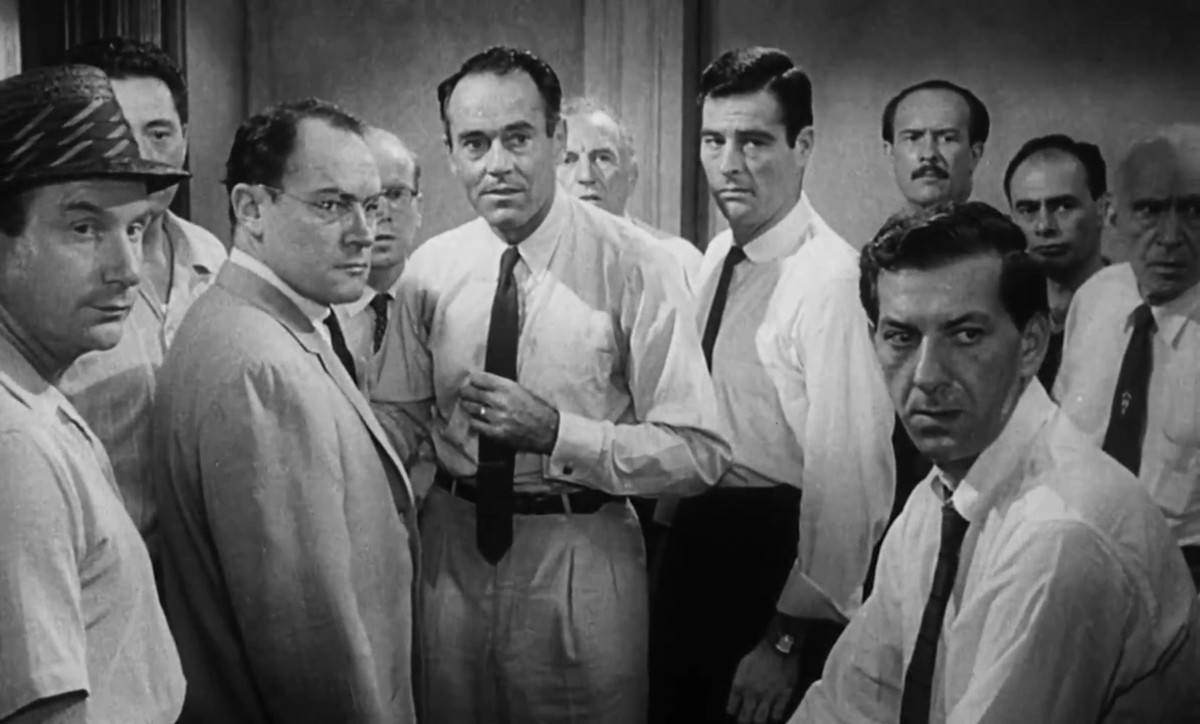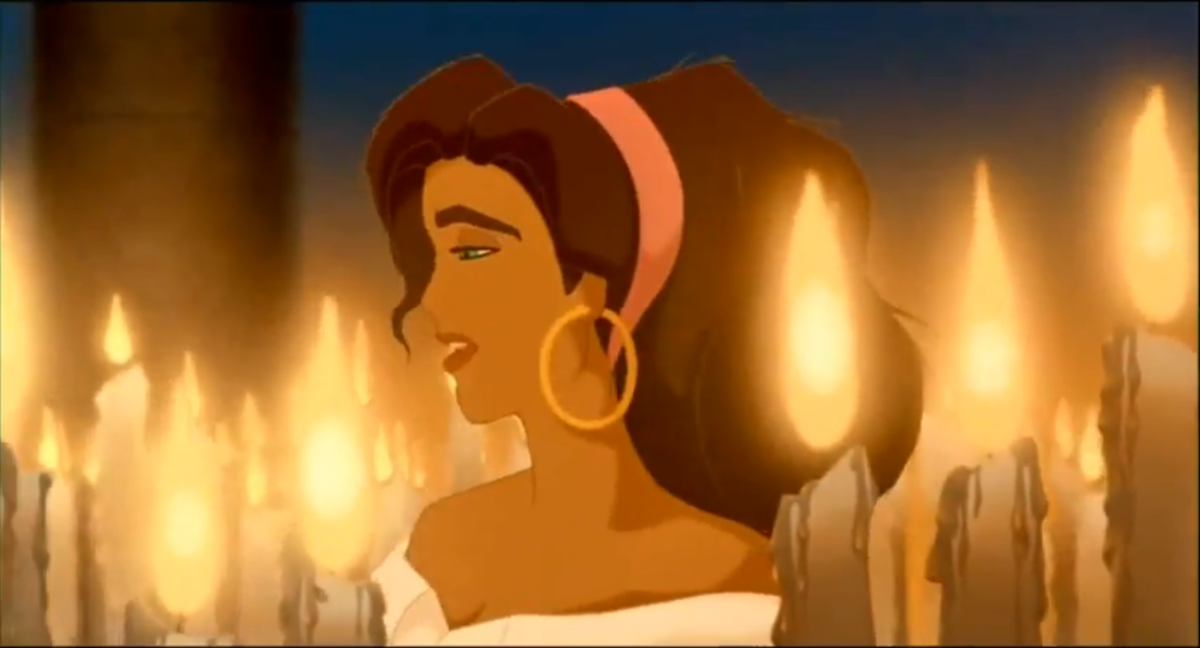Gone With The Wind, Frankly My Dear, I Love It
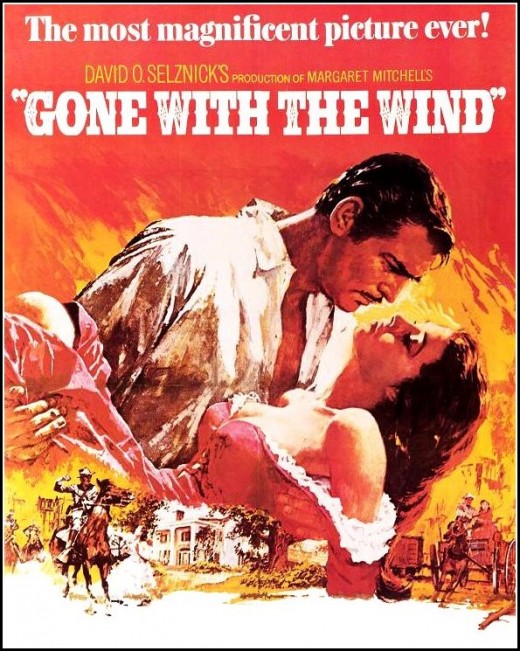
AN AMAZING FILM IN EVERY WAY
Gone With the Wind is an unforgettable movie, and represents a major milestone in the art of movie-making. Conceived from the outset as the ultimate Hollywood movie, it became the benchmark for popular epic cinema for decades to come. It came out in 1939, an incredibly prolific year for high quality movies, many of which are still hailed as classics today (The Wizard of Oz, Wuthering Heights, Mr. Smith Goes to Washington, Goodbye, Mr. Chips, and Stagecoach) and yet it still achieved an amazing 10 Academy Awards, a record held for 20 years when Ben Hur received 11. The movie has a lasting appeal and is undoubtedly a masterpiece, one of the crowning cinematic achievements of the 20th century.
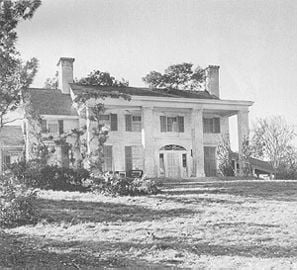
Plot Summary
The film is long, almost 4 hours and deals with many characters and numerous interwoven story lines against the sweeping backdrop of the American Civil War. The following, of necessity is an abridged summary of the story line. The film divides nicely into 2 parts. Part I deals with Scarlett O'Hara and her tangled web of relationships before and during the war. Part II continues the story line after the war focusing on Scarlett's passionate relationship with Rhett Butler.
PART I
At the start of the film we are introduced to Scarlett and learn that she is loves Ashley Wilkes and is devastated that he is going to ask his cousin Melanie to marry him. There is a barbecue at the Wilkes plantation and Scarlett, although the centre of attention for all the men, gets Ashley alone and declares her love for him. After Ashley leaves Rhett Butler shows himself - he was eavesdropping.
With the outbreak of war there is a double wedding, Ashley and Melanie and Scarlett and Charles Hamilton whom she weds to make Ashley jealous.
Scarlett is soon widowed and she goes to Atlanta to stay with Melanie. She meets Rhett again at a grand ball and their mutual atttraction becomes obvious.
Scarlett and Melanie help with nursing the wounded soldiers at the hospital. When everyone starts to flee the city before the advancing Union army, Rhett, before rejoining the war, heroically helps Scarlett, Melanie and baby to escape the burning city.
Scarlett, becoming feistier by the minute, gets them to Tara, which has been looted. Her mother has died and her father has lost his mind. Scarlett is the only one that the family can depend on. She vows her famous line, "As God as my witness I will never be hungry again."
More Movie Masterpieces From Hollywood's Golden Age
- Casablanca, You Must Remember This
Its as near to perfection as you can get with a film. Placed at the top or near the top of every list of Great Movies and universally loved. Great story, fizzing chemistry between Bogart and Ingrid Bergmann, wonderful music, and unforgettable ending - City Lights, Charlie Chaplin Shines Bright
City Lights is generally regarded as Chaplin's greatest film and represents the peak of his achievement and reputation. It offers a combination of pathos, slapstick and comedy and shows Chaplin's comic, acting and artistic genius at its finest. - Citizen Kane, Movie Masterpiece
The world's most famous and highly-rated film, with many remarkable scenes and innovative cinematic techniques. Its director, star, and producer were all the same remarkable genius - Orson Welles - who was making his film debut at the age of 25.
Part II
Part 2 opens with the war over. Scarlett is desperately short of money as the taxes on Tara have risen manyfold. When she is attacked by a Yankee looter she kills him and takes his money.
She decides that she'll go to see Rhett in Atlanta and ask him for money. Rhett is in jail, and he says that he can't get his money out because it is hidden in Europe. After this Scarlett runs into Frank Kennedy. She marries him for his money, and then she starts a lumber business with Ashley. As Scarlett is on her way to her lumber mill, she is attacked by hobos, but Big Sam saves her life.
Ashley, Frank and some other men carry out a vigilante raid to catch the attackers. Ashley is wounded and Frank is killed. Rhett saves them from arrest by telling the Union officer that they were with him at Belle Watling's brothel.
Rhett marries the now widowed Scarlett and after restoring Tara to its original grandeur he builds a lavish mansion for them in Atlanta. They have a daughter, Bonnie Blue (Cammie King), but afraid of spoiling her figure, Scarlett doesn't want more children and refuses to sleep with Rhett.
At the lumber mill Scarlett comforts a depressed Ashley by holding him which is seen by onlookers and reported back to Rhett, who believes it was a lover's embrace. Rhett gets drunk and forces himself on Scarlett, then goes to London taking Bonnie with him. Bonnie has nightmares and wants her mother, so Rhett brings her back to Atlanta. When they arrive, Scarlett informs Rhett she's pregnant and after a vicious argument she falls down the stairs causing a miscarriage. Scarlett calls for Rhett after the accident, but no one hears her ask for him.
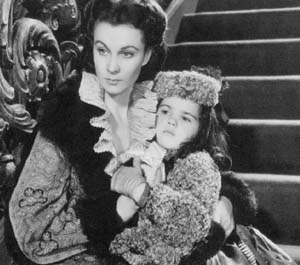
Adding tragedy to tragedy, Bonnie is killed in a riding accident. Rhett takes her body to the nursery and refuses to allow anyone in or for her to buried because she was so frightened of the dark. Mammy asks Melanie to speak to him and she convinces Rhett to permit the burial. After talking to Rhett, Melanie collapses and asks to be taken to her own home to die.
Scarlett visits Melanie on her deathbed and Melanie asks her to look after Ashley and little Beau.
After Melanie's death Scarlett realizes, too late, that she's really loved Rhett all along but Rhett says he cares nothing about her and plans to leave for Charleston. Scarlett is left to comfort herself with thoughts of Tara, her source of strength, with the possibility of winning Rhett back. "After all, tomorrow is another day".
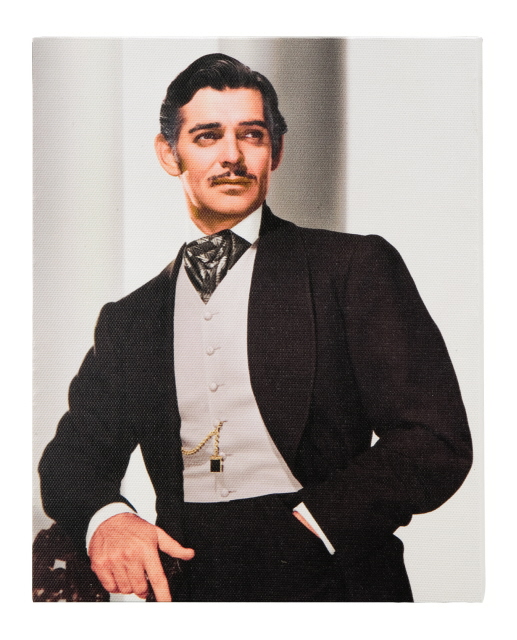
Main Cast
Rhett Butler - Clarke Gable
One of Hollywood's enduring legendary leading men, Clark Gable was nominated for three Best Actor Oscars over the course of his career and became the first actor ever to win an Academy Award for a comedy performance when he won for It Happened One Night (1934).
He was the most popular leading man of the 1930s and '40s and he earned his royal nickname when he won a popularity poll in 1936 and The New York Daily News crowned him King of Hollywood. He was nominated for an Oscar for his portrayal of Fletcher Christian in Mutiny on the Bounty (1935) and Rhett Butler in Gone with the Wind (1939).
When his third wife Carole Lombard died in a plane crash in 1942 while returning from a War Bond drive, a grief-stricken Gable joined the Army Air Corps. He resumed his career after the warf but never achieved the same heights. He died on November 16, 1960, two weeks after filming The Misfits with Marilyn Monroe.
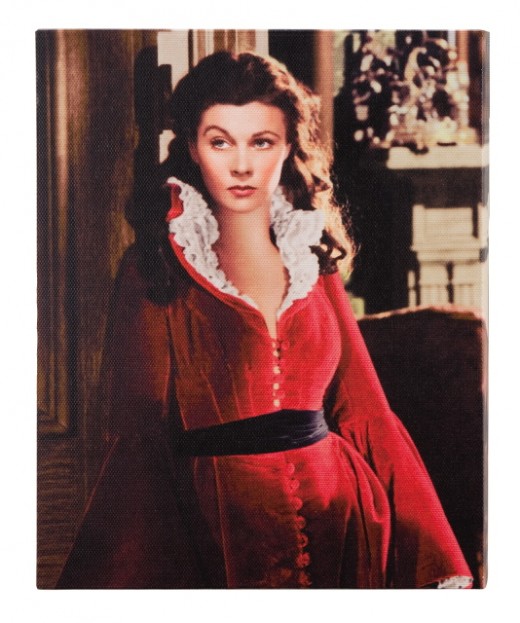
Scarlett O'Hara - Vivien Leigh
India-born British actress Vivien Leigh was born in Darjeeling, India, in 1913. She attended school in England, Italy, France, and Austria as her wealthy family moved about Europe. She married at 19 to a 31 year old lawyer called Leigh Holman and had a daughter, Suzanne, in 1933.
She made a major impact in a movie career of only 20 films, and won two Best Actress Oscars more than a decade apart to prove she had talent as well as striking good looks. And each time she played an American, first as Scarlett O'Hara, then as Blanche Dubois in A Streetcar Named Desire.
She was also a prolific stage performer, frequently in collaboration with her second husband, Laurence Olivier, who directed her in several of her roles.
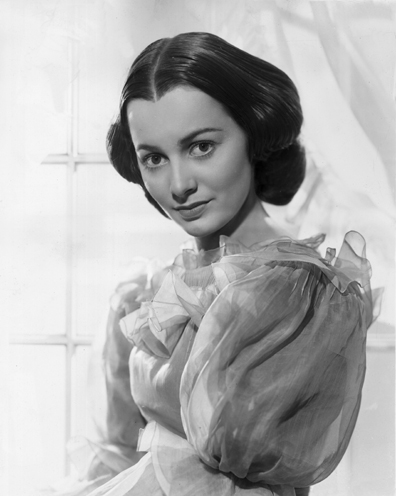
Melanie Hamilton - Olivia de Havilland
Olivia de Havilland is the last surviving principal cast member from Gone With the Wind. She earned five Academy Award nominations and two Best Actress Oscars over the course of her long career. She made eight movies with Errol Flynn and her enduring screen persona was of a sweet damsel in distress.
As well as her fame as movie star she is also justly famous for her court victory against Warner Brothers in the mid 1940s (many others had sued Warners but failed), which stopped Warners from adding suspension periods to actors' contracts and therefore meant more freedom for actors in Hollywood. It became known as the "de Havilland decision".
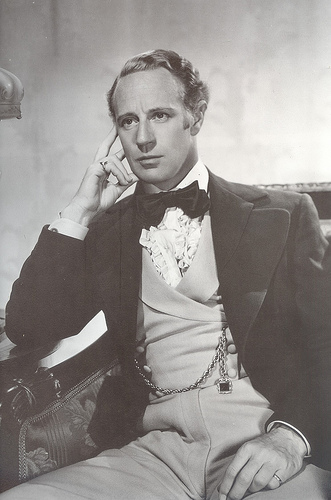
Ashley Wilkes - Leslie Howard
Acting had begun as a therapy for Leslie Howard, who had been diagnosed with shell-shock after a mortar attack in World War I. From 1930 he starred in many American films of note, the best known being his portrayal of Ashley in Gone With The Wind, but he was best known as the quintessential Englishman, though his parents were Hungarian Jews. He was a close friend of Humphrey Bogart, who named his son after him.
At the outbreak of the Second World War he returned to England and began directing and producing patriotic films. His entertainment tours may have concealed intelligence-gathering activities and he died in 1943 when his plane was shot down by the Luftwaffe.
Your One-Stop Classic Hollywood Site

Gone with the Wind on Hollywood's Golden Age
- Hollywood's Golden Age
Unique profile and information site about the actors, the actresses, the directors and the great films they made in the golden age of Hollywood.
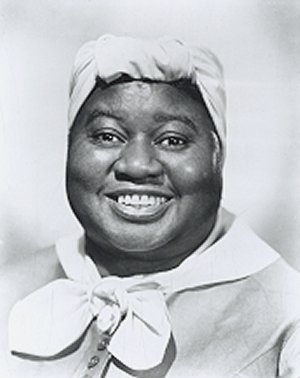
Mammy - Hattie McDaniel
Born in 1895, the daughter of an ex-slave, Hattie McDaniel won the 1939 Academy Award for best supporting actress for her portrayal of Mammy. She was the first African-American to be nominated for, let alone win, an Academy Award.
She appeared in over seventy movies during the 1930s invariably in the role of servant, cook, maid or nanny and even after winning the award she continued to be cast in those roles for the rest of her career. She famously said, "I'd rather play a maid and make $700 a week, than be a maid for $7."
She was the most successful black film actor or actress of her time, and one of the most recognizable and beloved character actresses of the 1930s and '40s. Her performances are unquestionably those of a gifted actress and comedienne. After successfully starting a new career in television in 1951 she contracted breast cancer and died the following year.
Gerald O'Hara - Thomas Mitchell
Suellen O'Hara - Evelyn Keyes
Carreen O'Hara - Ann Rutherford
Stuart Tarleton - George Reeves
Brent Tarleton - Fred Crane
Pork - Oscar Polk
Prissy - Butterfly McQueen
Jon Wilkerson (the overseer) - Victor Jory
Big Sam (the foreman) - Everett Brown
John Wilkes - Howard C. Hickman
India Wilkes - Alicia Rhett
Rand Brooks - Charles Hamilton
Frank Kennedy - Carroll Nye
Aunt Pittypat Hamilton - Laura Hope Crews
Dr. Meade - Harry Davenport
Mrs. Meade - Leona Roberts
Mrs. Dolly Merriwether - Jane Darwell
Belle Watling - Ona Munson
Yankee deserter - Paul Hurst
Emmy Slattery - Isabel Jewell
Bonnie Blue Butler - Cammie King
Amputation case - Eric Linden
Johnny Gallagher - J.M. Kerrigan
Tom (Yankee captain) - Ward Bond
Phil Meade - Jackie Moran
Remniscent soldier - Cliff Edwards
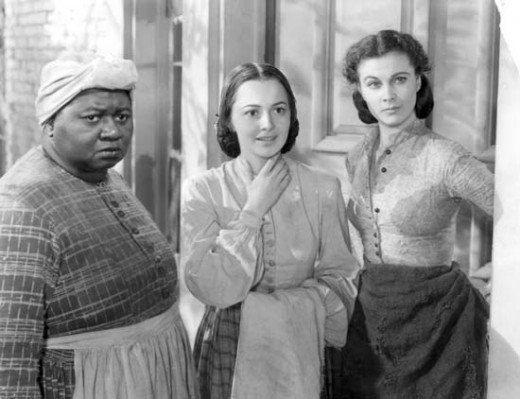
Behind The Scenes
Gone With The Wind was Margaret Mitchell's only published novel. It first appeared in 1936, but was written in the late 1920s. At the time of the film's release, the book had surpassed 1.5 million copies sold. The film rights were purchased by Producer David O. Selznick in 1936 for $50,000 - a record amount for a first novel.The lion's share of the financing was provided by financier John Hay Whitney, Selznick's business partner, who later went on to become a U.S. ambassador.
The movie was ground-breaking in its production budget - over$4 million - an enormous sum. The film, originally rough-cut at 6 hours in length, later reduced to just under 4 hours, required major logistical organisation as there are more than 50 speaking roles and 2,400 extras in the film. A permanent staff of seven artists provided more than 1,500 watercolor sketches for the movie. From these sketches, which indicated every proposed camera angle, two hundred sets were designed and ninety were actually erected.
Screen Tests
The casting of the female lead was an epic story in itself. Even before
a nationwide casting search for an actress to play the Southern belle
began, word had spread round Hollywood that the search was on for
Scarlett O'Hara. Approximately 1,400 actresses auditioned for the role,
and some well-known actresses were considered and tested including
Katharine Hepburn, Loretta Young, Paulette Goddard, Barbara Stanwyck,
Joan Crawford, Norma Shearer,
Lana Turner, Tallulah Bankhead, and
Lucille Ball. Vivien Leigh was a young English actress little known in
America. Selznick had seen her in 1938 in 'Fire Over England' and 'A
Yank at Oxford' and he announced her casting in January 1939. Although
reigning MGM superstar Clark Gable was always expected to play the role
of the dashing war profiteer Rhett Butler, Errol Flynn, Ronald Colman,
and Gary Cooper were also considered for the part. In the end, Leigh
received about $25,000 for her work, compared to Gable's $120,000.
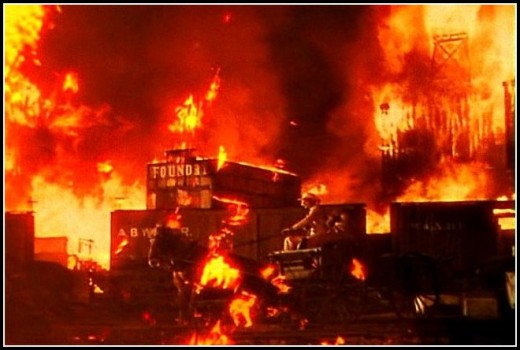
Principal photography began in late January, 1939 and ended 6 months
later, with post-production work (including a fifth version of the
opening scene) going on for another 5 months. Most of the filming was
done at Culver Studios with all the location scenes being photographed
in California, mostly in Los Angeles or Ventura County.
The
first scheduled filming was one of the most spectacular scenes - the
burning of Atlanta. What was actually burned were some old sets
including the "Great Gate" used in King Kong 6 years earlier. The scene
used all seven existing Hollywood's Technicolor cameras to film the
scene. Flames leapt 500 feet high and 250 studio firemen and helpers
stood by throughout the shooting. The cost of producing this scene
alone was estimated at $25,000, a gigantic sum at the time.
What Makes It Special
Gone With The Wind is an all time record breaker for ticket sales and it is invariably in the top ten of most 'Best Movie' Lists. The sweep and drive of the movie are irresistible and some of the set pieces are among the most spectacular in cinema history: the pullback from Scarlett as nurse to fill the screen with injured soldiers, the dash through the fires as Atlanta burns, the wonderful shot of Tara at sundown in the beginning are made all the more vivid by the early Technicolor. The score (by Max Steiner) is one of the most powerful and uplifting ever written, and watching the movie, even today, is an emotional experience.
The acting is first class from a wonderful cast. Vivien Leigh and Clark Gable may not have had a good personal rapport but they certainly struck sparks off each other in front of the camera. The perfect screen couple.
Gone With The Wind is a good example of a movie made when Hollywood was still able to hang the cost and throw the cheque book to get what it wanted. The result is spectacular, the result is arguably the greatest movie ever made.
Academy Awards
17 competitive awards were given at the time, and Gone with the Wind had 13 nominations, winning eight:
Best Actress (Vivian Leigh); Best Supporting Actress (Hattie McDaniel); Best Director (Victor Fleming); Best Picture; Best Film Editing; Best Writing; Best Interior Art Direction and Best Cinematography. It was also nominated for Original Score, Sound, and Best Actor (Clark Gable). The movie also received two special awards for color and for equipment projection.
The Ending
Hollywood Superstars Who All Died Young
- Errol Flynn, A Hollywood Death
Errol Flynn, with his exceptional looks and athleticism, had become by the early 40's, nothing short of a Hollywood God. But then he began to unravel. He experienced failure, illness and far too early at the age of 50, Flynn drank himself to death. - Marilyn Monroe Hollywood Sex Goddess
Marilyn Monroe died a suicide at 36, after starring in only a handful of movies, but she dominated the golden age of Hollywood and personified Hollywood glamour and she became, without question, the most famous woman of the 20th Century. - John Gilbert, The Star Who Exploded Without Trace
John Gilbert was one of the very early Hollywood meteors. His rise was sudden and his decline even more dramatic. His talent was evident but it did not save him from the vicious politics of Hollywood. Louis B Mayer made him and it was Mayer who destr - Judy Garland, Complete Entertainment
Born into show business, Judy Garland became one of classic Hollywood's most popular musical entertainers and actresses. She was only 47 when she died in 1969 but she had already created for herself a legendary status which has increased over time.
